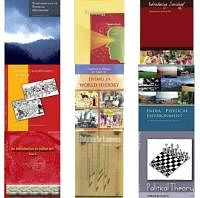Humanities/Arts Exam > Humanities/Arts Questions > How many units of a commodity should a consum...
Start Learning for Free
How many units of a commodity should a consumer buy to get its maximum utility explain with the help of a numerical example?
Most Upvoted Answer
How many units of a commodity should a consumer buy to get its maximum...
How to Determine the Maximum Utility of a Commodity
Consumers want to maximize their utility or satisfaction when buying a commodity. To achieve this, they need to determine the optimal number of units to purchase. Here are the steps to follow to maximize utility:
Step 1: Determine the Marginal Utility
The first step is to determine the marginal utility of each unit of the commodity. Marginal utility refers to the additional satisfaction a consumer gets from consuming one more unit of a good or service.
Step 2: Calculate the Total Utility
The next step is to calculate the total utility of each quantity of the commodity. Total utility refers to the overall satisfaction a consumer gets from consuming a certain quantity of a good or service.
Step 3: Compare the Marginal and Total Utility
Finally, the consumer should compare the marginal and total utility to determine the optimal quantity of the commodity to purchase. The consumer should continue buying units of the commodity as long as the marginal utility is greater than or equal to the price. When the marginal utility becomes less than the price, the consumer should stop buying the commodity.
Numerical Example
Suppose a consumer is considering purchasing cups of coffee. The following table shows the marginal and total utility of each cup:
| Cups of Coffee | 1 | 2 | 3 | 4 | 5 |
|---|---|---|---|---|---|
| Marginal Utility | 10 | 8 | 6 | 4 | 2 |
| Total Utility | 10 | 18 | 24 | 28 | 30 |
The price of a cup of coffee is $2. The optimal number of cups to purchase is:
- Buy 1 cup of coffee: The marginal utility is greater than the price, so the consumer should buy 1 cup.
- Buy 2 cups of coffee: The marginal utility is still greater than the price, so the consumer should buy 2 cups.
- Buy 3 cups of coffee: The marginal utility is now less than the price, so the consumer should stop buying coffee.
In this example, the consumer should purchase 2 cups of coffee to maximize their satisfaction.
Attention Humanities/Arts Students!
To make sure you are not studying endlessly, EduRev has designed Humanities/Arts study material, with Structured Courses, Videos, & Test Series. Plus get personalized analysis, doubt solving and improvement plans to achieve a great score in Humanities/Arts.

|
Explore Courses for Humanities/Arts exam
|

|
Similar Humanities/Arts Doubts
How many units of a commodity should a consumer buy to get its maximum utility explain with the help of a numerical example?
Question Description
How many units of a commodity should a consumer buy to get its maximum utility explain with the help of a numerical example? for Humanities/Arts 2024 is part of Humanities/Arts preparation. The Question and answers have been prepared according to the Humanities/Arts exam syllabus. Information about How many units of a commodity should a consumer buy to get its maximum utility explain with the help of a numerical example? covers all topics & solutions for Humanities/Arts 2024 Exam. Find important definitions, questions, meanings, examples, exercises and tests below for How many units of a commodity should a consumer buy to get its maximum utility explain with the help of a numerical example?.
How many units of a commodity should a consumer buy to get its maximum utility explain with the help of a numerical example? for Humanities/Arts 2024 is part of Humanities/Arts preparation. The Question and answers have been prepared according to the Humanities/Arts exam syllabus. Information about How many units of a commodity should a consumer buy to get its maximum utility explain with the help of a numerical example? covers all topics & solutions for Humanities/Arts 2024 Exam. Find important definitions, questions, meanings, examples, exercises and tests below for How many units of a commodity should a consumer buy to get its maximum utility explain with the help of a numerical example?.
Solutions for How many units of a commodity should a consumer buy to get its maximum utility explain with the help of a numerical example? in English & in Hindi are available as part of our courses for Humanities/Arts.
Download more important topics, notes, lectures and mock test series for Humanities/Arts Exam by signing up for free.
Here you can find the meaning of How many units of a commodity should a consumer buy to get its maximum utility explain with the help of a numerical example? defined & explained in the simplest way possible. Besides giving the explanation of
How many units of a commodity should a consumer buy to get its maximum utility explain with the help of a numerical example?, a detailed solution for How many units of a commodity should a consumer buy to get its maximum utility explain with the help of a numerical example? has been provided alongside types of How many units of a commodity should a consumer buy to get its maximum utility explain with the help of a numerical example? theory, EduRev gives you an
ample number of questions to practice How many units of a commodity should a consumer buy to get its maximum utility explain with the help of a numerical example? tests, examples and also practice Humanities/Arts tests.

|
Explore Courses for Humanities/Arts exam
|

|
Suggested Free Tests
Signup for Free!
Signup to see your scores go up within 7 days! Learn & Practice with 1000+ FREE Notes, Videos & Tests.

























